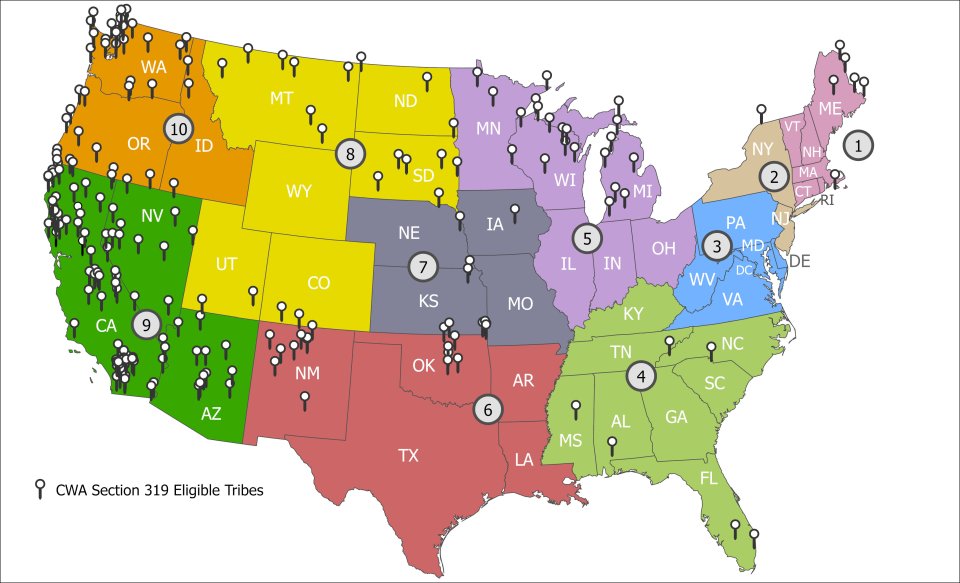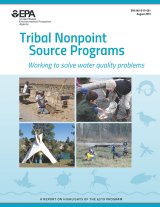Tribal Nonpoint Source Program
On this Page:
Overview:
Federally recognized Tribal lands cover over 110,000 square miles of the United States. Unlike a single state, these lands are held by more than 570 distinct Indian Tribes, each with a unique set of water resources used for recreation, transportation, fishing, aquaculture, drinking water, ceremonial purposes, and more. Each Tribe faces a unique set of challenges in protecting these resources. Together, Indian Tribes are responsible for protecting and restoring tens of thousands of square miles of rivers, streams, and lakes, as well as ground water. Tribes across the country are using Clean Water Act Section 319 grants to assess and manage nonpoint source (NPS) pollution.
Nonpoint source (NPS) pollution, unlike pollution from industrial and sewage treatment plants, comes from many diffuse sources. NPS pollution is caused by rainfall or snowmelt moving over and through the ground. As the runoff moves, it picks up and carries away natural and human-made pollutants, finally depositing them into lakes, rivers, wetlands, coastal waters and ground waters. Learn more about the types of nonpoint source pollution here.
Under CWA §319, EPA provides grants and technical assistance to support tribal environmental programs in assessing and managing NPS pollution problems and threats. A wide range of activities are eligible for funding under §319, including but not limited to: NPS training for tribal staff, developing watershed-based plans, riparian planting, livestock exclusion fencing, lake protection and restoration activities, NPS ordinance development, outreach and education, and many more.
Program Highlights
Tribal Eligibility Under CWA Section 319
Tribes and intertribal consortia must meet the following four conditions to be eligible to apply for CWA section 319 funding:
- Be federally recognized by the Secretary of the Interior
- Have an approved NPS assessment report in accordance with CWA section 319(a)
- Have an approved NPS management program in accordance with CWA section 319(b)
- Be approved for treatment in a similar manner as a state (TAS) in accordance with CWA section 518(e).
Of the 574 federally recognized tribes, approximately 330 meet the requirements above to apply for TAS. As of Federal Fiscal Year 2025, 217 Tribes/Nations are eligible for the Section 319 base and competitive grants: List of Tribes Eligible For Clean Water Act Section 319 Base and Competitive Funding for FY2025 (pdf)
Tribes interested in developing NPS pollution management programs using Section 319 funds should contact their EPA regional office for information on how to apply for TAS. More information about the Tribal NPS Program can be found in EPA's Handbook for Developing and Managing Tribal Nonpoint Source Pollution Program (PDF) (182 pp, 8.6MB).

As of 2025, there are 219 federally recognized Tribes with EPA-approved nonpoint source programs under Clean Water Act Section 319. Currently, there are no CWA Section 319 eligible Tribes in Alaska or Hawaii.

